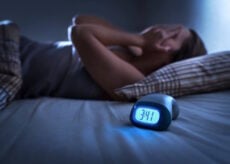5 Natural Ways to Beat the Winter Blues

Winter brings shorter, darker, and colder days, leaving you wanting to stay curled up in bed until Spring arrives. If only you were a bear, and you could hibernate. Alas, that’s obviously not the case, and many people, especially in the northern hemisphere, struggle with some degree of the “winter blues.” For some, it’s a kind of sluggishness that’s annoying but not debilitating. Others, however, get hit harder, falling prey to:
- Feeling blue
- Sleep problems
- Lethargy
- Overeating
- Carbohydrate/sugar cravings
- Weight gain
- Difficulty concentrating
- Irritability
- Withdrawal from social activity
- Decreased physical activity
What Causes Winter Blues
Shorter days and less time spent outdoors are thought to be factors in Winter-related blues. When you’re indoors nearly all the time, you don’t get optimal exposure to sunlight, a major factor in regulating our circadian rhythms, the body’s internal 24-hour “clock,” which is designed to respond to the rhythmic light-dark changes that occur daily and throughout each of the seasons.
Interestingly, the circadian signal that indicates a seasonal change in day length has been found to be timed differently in folks who experience the winter doldrums, making it more difficult for their bodies to adjust.
Difficulty regulating certain neurotransmitters and hormones seems to be a contributing factor to winter blues. For instance, Winter may cause a drop in serotonin levels, which can contribute to poor mood states, increase in appetite and carbohydrate cravings, irritability, and more. In addition, the winter blues also appears be associated with overproduction of the hormone melatonin, which causes sleepiness and lethargy.
How to Beat the Winter Blues
Each person is affected differently, and solutions that work for some may not work for others. It’s a matter of trial and error, and the following list provides some good starting places. Experiment and find the best combination of changes that helps you send the winter blues packing.
1. Get Some Sunlight
As mentioned above, sunlight plays a critical role in the decreased serotonin activity, increased melatonin production, and disrupted circadian rhythms. Thus, one solution is to get as much natural sunlight as you can. When days are bright, even if it’s cold, spend time outside. As obvious as this solution may be, it is one with which care must be taken, as cold temperatures may be a contributing factor to increased melatonin levels.
2. Supplement with the “Sunshine Vitamin”
Sun exposure and Vitamin D, colloquially termed the “sunshine vitamin,” go hand-in-hand, and not surprisingly, many people who experience the winter blues have insufficient or deficient levels of Vitamin D. Unfortunately, the further you live north of the equator, the greater the likelihood of being deficient in the sunshine vitamin. Essentially, anyone living higher than 37° north of the equator in the Northern Hemisphere has such reduced sun exposure in the autumn and winter months that Vitamin D synthesis is virtually impossible.

Fortunately, studies have shown that supplementation with Vitamin D3 (800 – 4,000 IU/day) may significantly improve mood. Even more, there is some evidence that suggests supplementing with Vitamin D before the winter months set in may help circumvent the winter blues altogether.
3. Exercise Regularly
Arguably one of the most underrated and underappreciated tools for combatting the winter blues is exercise. Studies consistently show that exercise—particularly aerobic exercise performed at moderate and vigorous intensities (e.g., HIT)—has a significant and powerful positive effect on mood.
As you might imagine, exercising outdoors may enhance the benefits of physical activity. For instance, Shinrin-yoku (also known as “forest bathing”), which typically involves taking a leisurely walk in nature, is commonly practiced for the purpose of relaxation and stress management, and studies show that it can improve mood, increase vigor, and reduce irritability.
While the timing of exercise is not the most important factor, early morning exercise may have additional benefits on resetting circadian rhythms (i.e., delay in the onset of melatonin release). Having said that, please don’t let timing hold you back from exercise; the “best” time to exercise is when you have time.
Of course, it can be hard to get moving when you’re feeling blue, sluggish, and lethargic, which are all obvious barriers to being physically active. Start with the minimum and take it one step at a time—figuratively and literally. For instance, you might schedule 5 minutes of walking. Or, you might simply start with the act of putting on your gym shoes. You might even ask a friend to exercise with you. Both the support and accountability can go a long way to helping you get moving.
4. Lighten Things Up
While indoor lighting doesn’t affect your body the same way as natural light, studies have consistently shown that using bright artificial light (i.e., bright light therapy), particularly in the morning, has consistently shown promise in providing relief from the winter blues.
You can purchase light boxes that emit full spectrum light, just like sunshine. Generally speaking, bright light therapy consists of daily exposure to 10,000 lux of cool-white fluorescent light for 20 – 60 minutes. To put it into perspective, that’s about 20 times the intensity of normal indoor lighting.
In addition to using bright light therapy, increasing the amount of natural light that comes into your house or office is also a good idea to help to ward off winter blues. Keep windows uncovered and sit as close to them as possible.
5. Talk it Out
One particularly effective way to engage in social support, which has benefits of its own, and put the kibosh on winter blues is cognitive behavioral therapy (CBT). In fact, in addition to light therapy, exercise, and Vitamin D supplementation, professional counselling is another tried and true method for dealing with the winter doldrums.
One study showed that 6 weeks of two 90-minute group sessions per week of CBT, which is designed to break down issues that seem overwhelming while reframing negative thought patterns, was as effective as 30 minutes of light box therapy every morning in terms of improving mood and feelings of wellbeing.
Beat the Blues
If you are particularly affected by this time of year, take heart in knowing that there are several effective strategies that may help you overcome the winter blues. Don’t let the winter doldrums get the best of you; take steps to fight back!






